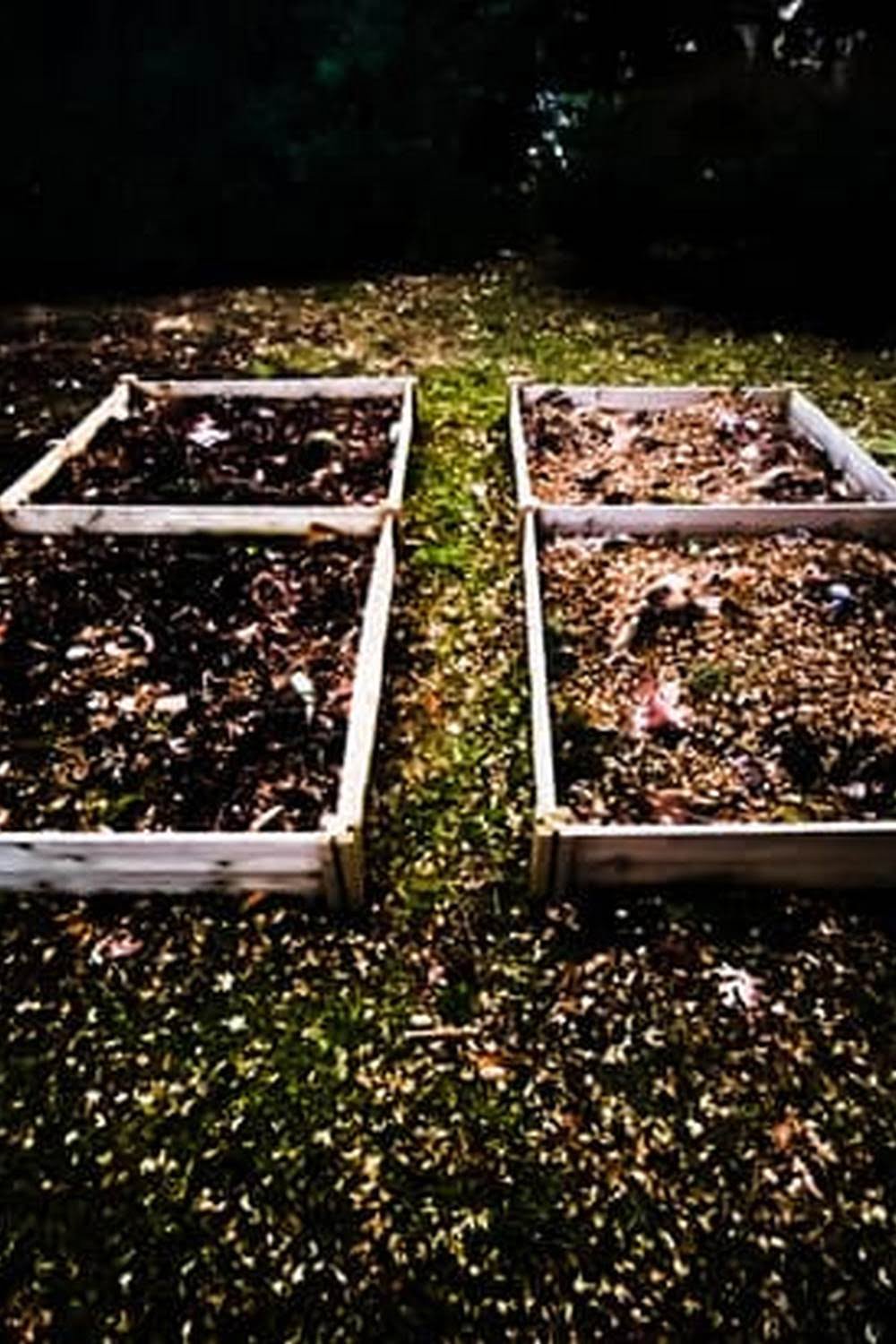Malls are known for their thriving retail stores, food courts, and entertainment options. However, with the rise of e-commerce and changing consumer habits, many malls are facing a growing number of vacant store fronts. In response to this trend, an innovative solution has emerged: transforming these unused spaces into vegetable gardens. This article explores the potential of using vacant store fronts in malls as spaces for urban gardening and community engagement.
Urban gardening has become a popular trend in recent years, as more people seek sustainable and environmentally-friendly ways to produce their own food. This movement towards urban gardening aligns with the growing concern for environmental sustainability and food security. By utilizing empty storefronts in malls as locations for vegetable gardens, there is an opportunity to not only address the issue of vacant spaces but also contribute to a more sustainable and greener urban landscape.
The benefits of implementing vegetable gardens in vacant store fronts extend beyond just environmental sustainability. These gardens can also have a positive impact on the local community by providing access to fresh produce, creating communal gathering spaces, and fostering a sense of pride and ownership among residents. As such, it is important to explore the potential impact of mall vegetable gardens on both the environment and the community.
The Rise of Urban Gardening
There are several reasons why urban gardening has gained popularity and is considered a sustainable practice. Some of these reasons include:
- Utilization of unused spaces: Empty storefronts in malls provide an opportunity for urban residents to grow their own produce and contribute to local food sourcing.
- Reduction of food miles: By growing fruits and vegetables closer to where they will be consumed, urban gardens help reduce the carbon footprint associated with transportation and storage of produce.
- Promotion of biodiversity: Urban gardens support the growth of diverse plant species, attracting pollinators and beneficial insects that contribute to the overall health of the ecosystem.
Furthermore, the popularity of urban gardening reflects a growing interest in self-sufficiency and a desire to reduce reliance on industrialized food production. By repurposing vacant store fronts in malls as vegetable gardens, communities can take a step towards greater sustainability while also fostering a deeper connection between people and their food sources.
Benefits of Vegetable Gardens in Vacant Store Fronts
Vegetable gardens in vacant store fronts in malls offer numerous environmental and community benefits. These innovative and sustainable projects not only make use of underutilized spaces but also contribute to a more eco-friendly and socially engaged urban environment.
From an environmental perspective, the introduction of vegetable gardens into vacant mall storefronts can help reduce the urban heat island effect by providing green spaces that absorb heat and carbon dioxide. Additionally, these gardens can contribute to improved air quality by trapping pollutants and producing oxygen through photosynthesis. The practice of urban gardening also promotes biodiversity and helps support local ecosystems, which may otherwise be disrupted by concrete-dominated landscapes.
In terms of community impact, vegetable gardens in vacant store fronts can act as focal points for neighborhood engagement and collaboration. Residents, businesses, and local organizations have the opportunity to participate in the planning, planting, and maintenance of these gardens, fostering a sense of ownership and pride within their communities.
Furthermore, these projects can serve as educational resources for teaching sustainable practices such as composting, water conservation, and organic gardening techniques. Overall, the presence of vegetable gardens in mall storefronts has the potential to strengthen social ties and create a more vibrant and connected urban environment.
| Environmental Benefits | Examples |
|---|---|
| Improved air quality | Reduction in air pollutants due to increased vegetation |
| Urban heat island mitigation | Lower ambient temperatures in mall areas with vegetation |
| Biodiversity support | Promotion of insect pollinators and other wildlife within urban spaces |
Innovative Solutions for Transforming Empty Storefronts Into Thriving Gardens
As the trend of urban gardening continues to gain momentum, innovative solutions for transforming empty storefronts into thriving vegetable gardens have emerged as a way to repurpose underutilized spaces in malls. This approach not only addresses the issue of vacant store fronts but also contributes to sustainability and community well-being.
Vertical Gardens and Hydroponic Systems
One innovative solution for creating vegetable gardens in vacant store fronts is the use of vertical gardens and hydroponic systems. These space-saving techniques allow for the cultivation of a variety of vegetables without the need for traditional soil beds. By utilizing vertical space and efficient water usage, these systems can maximize the growing potential within limited storefront areas.
Modular Garden Structures
Modular garden structures offer another creative approach to repurposing empty mall storefronts. These prefabricated units can be easily installed and customized to fit different storefront layouts, allowing for flexibility in design and plant selection. Additionally, these structures can provide a visually appealing display that attracts shoppers while also serving as a source of fresh produce for the community.
Collaborations With Local Urban Farming Initiatives
Collaborating with local urban farming initiatives presents yet another innovative solution for transforming vacant store fronts into thriving gardens. By partnering with established organizations or individuals experienced in urban agriculture, malls can leverage their expertise and resources to create successful vegetable gardens. This collaboration not only promotes community engagement but also ensures the sustainable management and maintenance of the garden spaces.
With these innovative solutions, vegetable gardens in vacant store fronts have the potential to revitalize mall spaces, promote sustainability, and foster community connections. As this trend continues to grow, it will be important to explore new ways to optimize these garden spaces and encourage further involvement from local residents and businesses.
Successful Examples of Vegetable Gardens in Vacant Store Fronts
One successful example of converting vacant store fronts in a mall into thriving vegetable gardens can be seen in the case of The Green Mall Project. This project, located in a struggling shopping center, transformed empty storefronts into vibrant vegetable plots with the help of local volunteers and businesses.
These gardens not only provided fresh produce for the community but also created a sense of pride and ownership among the residents, leading to increased foot traffic and revitalization of the entire mall.
Another inspiring case study is the Urban Food Forest Initiative, which spearheaded the development of an urban farm within a previously abandoned shopping complex. By utilizing hydroponic and vertical farming techniques, they were able to maximize space and produce an abundance of leafy greens, tomatoes, and herbs. The initiative not only addressed food insecurity in the area but also served as an educational hub for sustainable farming practices.
The third case study highlights the Mall Garden Co-op, where local businesses collaborated with community members to launch a cooperative gardening project in a mall that had been struggling to attract tenants. Together, they were able to grow a wide variety of vegetables, fruits, and herbs year-round using sustainable growing methods. This endeavor not only brought people together but also drew positive attention to the mall as a hub for urban agriculture innovation.
- The Green Mall Project
- Urban Food Forest Initiative
- Mall Garden Co-op
Community Involvement and Engagement
The success of vegetable gardens in vacant store fronts in malls relies heavily on the active involvement of local residents and businesses. Community engagement not only ensures the sustainability of these gardens but also fosters a sense of ownership and pride among those who participate.
Local residents can contribute by volunteering their time to help build and maintain the gardens, while businesses can provide financial support or donate materials such as soil, seeds, and gardening tools. Furthermore, community members can also participate in educational workshops and events to learn about sustainable gardening practices and healthy eating.
In a study conducted by the University of California, Berkeley, it was found that community involvement in urban gardening projects led to increased social interactions among residents, improved mental well-being, and a greater sense of community cohesion. By actively participating in vegetable gardens in vacant store fronts, local residents can take pride in transforming neglected spaces into productive and green areas that benefit the entire community.
Furthermore, businesses located within or near malls with vegetable gardens can also benefit from this initiative. Not only does it provide an opportunity for corporate social responsibility (CSR) initiatives, but it also enhances the overall aesthetics of the mall environment, potentially attracting more customers.
In addition to financial contributions, businesses can also collaborate with local organizations to host gardening workshops or sponsor community events related to sustainable living. This level of cooperation creates a symbiotic relationship between the mall establishment, its tenants, and the surrounding community.
| Benefits | Data |
|---|---|
| Increased Social Interactions | University of California Berkeley study found that participation in urban gardening projects leads to increased social connections among residents. |
| Sense of Community Cohesion | Community involvement in garden projects fosters a greater sense of belonging and unity among residents. |
| Financial Contributions | Businesses located near these gardens can provide financial support or resources such as soil, seeds, and tools. |
Challenges and Solutions
One of the main challenges in creating vegetable gardens in vacant store fronts in malls is the lack of adequate sunlight. Most mall buildings are designed to maximize indoor space and minimize exposure to natural light, making it difficult for plants to thrive. This challenge can be addressed through innovative solutions such as utilizing vertical gardening techniques or installing specialized lighting systems that mimic natural sunlight.
Another obstacle is the limited access to water sources within mall premises. Without a reliable water supply, maintaining a vegetable garden becomes challenging. Implementing efficient irrigation systems and collecting and recycling rainwater can help address this issue and ensure that the plants receive the necessary moisture for growth.
Additionally, pest control in an enclosed environment like a mall can be a significant hurdle for maintaining vegetable gardens. Pests such as insects and rodents can pose a threat to the crops. Implementing integrated pest management strategies, such as using natural predators or organic pest control methods, can help address this challenge without relying on harmful chemicals.
Community Involvement and Education: Fostering Sustainable Practices
In addition to technical challenges, community involvement and education are essential for the success of mall vegetable gardens. Engaging local residents, businesses, and organizations in the planning and maintenance of these gardens fosters a sense of ownership and responsibility. Workshops, educational events, and volunteer programs can be organized to educate community members about sustainable gardening practices and encourage their participation in caring for the vegetables.
Regulatory Approval and Cooperation With Mall Management
Another significant challenge is obtaining regulatory approval from local authorities and cooperation from mall management. Zoning regulations, building codes, and lease agreements may present barriers to establishing vegetable gardens in vacant store fronts. Overcoming these obstacles requires collaboration with relevant authorities and negotiations with mall management to secure the necessary permissions and support for implementing these green initiatives within the commercial space.
The Future of Mall Vegetable Gardens
In conclusion, the potential for vegetable gardens in vacant store fronts in malls is an innovative and sustainable use of unused urban space. The rise of urban gardening represents a growing trend towards environmental sustainability and community engagement, making it a positive investment for the future. By transforming empty storefronts into thriving gardens, communities can benefit from increased access to fresh produce, reduced environmental impact, and a revitalized sense of community.
Successful case studies have demonstrated the positive impact of mall vegetable gardens on both the environment and local communities. With community involvement and engagement, local residents and businesses can play an active role in the creation and maintenance of these gardens, further enhancing their impact on urban landscapes. It is important to embrace innovative solutions that not only address food insecurity but also contribute to creating vibrant and sustainable urban spaces.
While there may be challenges in creating and maintaining mall vegetable gardens, such as lack of resources or logistical hurdles, there are solutions available to overcome these obstacles. Looking ahead, there is great potential for the expansion of mall vegetable gardens across urban landscapes.
With continued support from local governments, businesses, and residents, these gardens can make a significant impact on improving food access, promoting sustainability, and fostering a sense of community within urban areas. As we move towards a more sustainable future, embracing initiatives like vegetable gardens in vacant store fronts in malls will be essential in creating healthier and more vibrant urban environments.
Frequently Asked Questions
What Are the Best Locations for a Vegetable Garden?
The best locations for a vegetable garden are those that receive plenty of sunlight, have well-drained soil, and easy access to water. Areas with good air circulation and protection from strong winds are also ideal.
Can You Have a Vegetable Garden in an Apartment?
It is possible to have a vegetable garden in an apartment, even if you don’t have a yard. You can use containers, hanging baskets, or window boxes to grow vegetables like tomatoes, peppers, lettuce, and herbs on balconies or windowsills.
How to Make a Cheap Vegetable Garden?
To make a cheap vegetable garden, you can start by using seeds instead of buying seedlings, which can be more expensive. You can also save money by reusing containers or upcycling materials like old buckets or crates to create planting beds. Additionally, making your own compost and using it as fertilizer will help you save on soil amendments costs.

If you’re looking to get into vegetable gardening, or are just looking for some tips on how to make your current garden better, then you’ve come to the right place! My name is Ethel and I have been gardening for years. In this blog, I’m going to share with you some of my best tips on how to create a successful vegetable garden.





